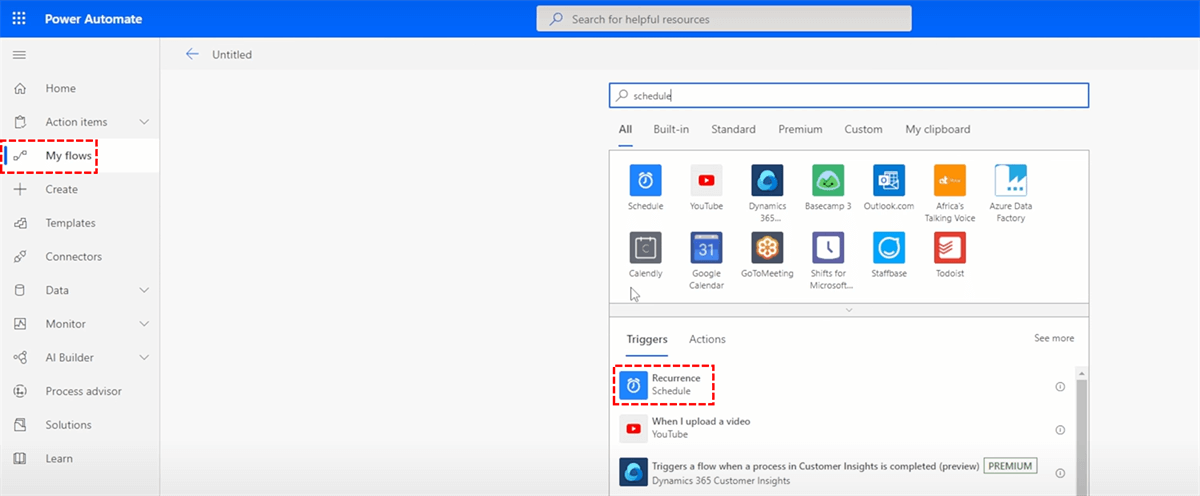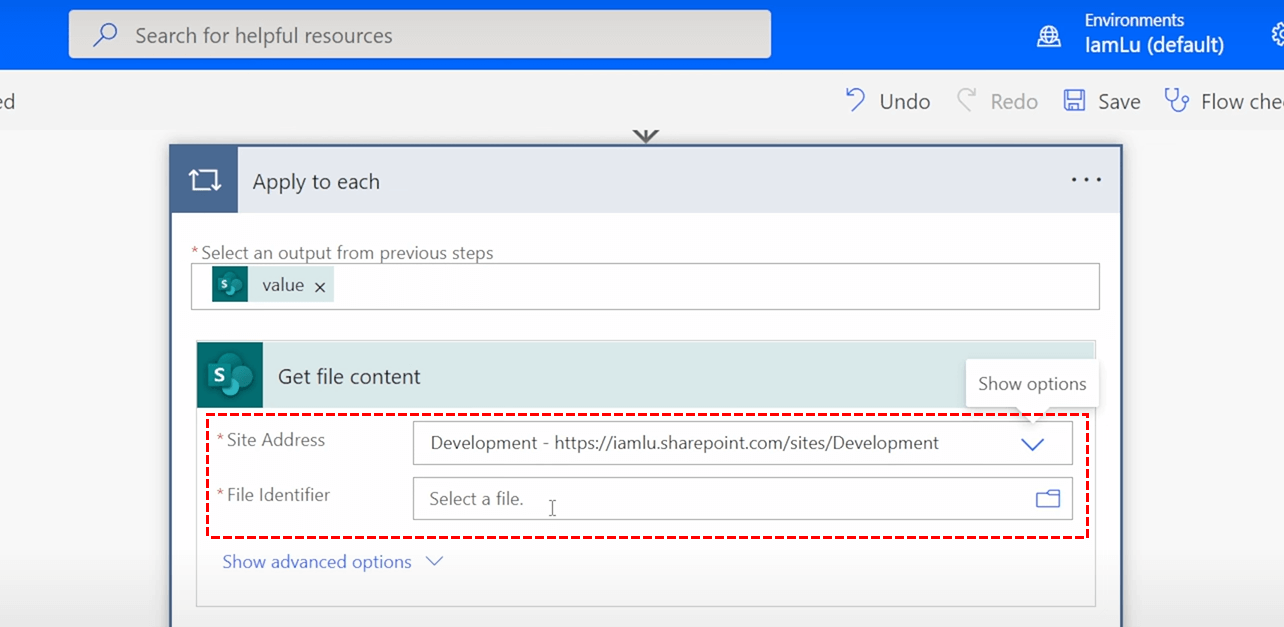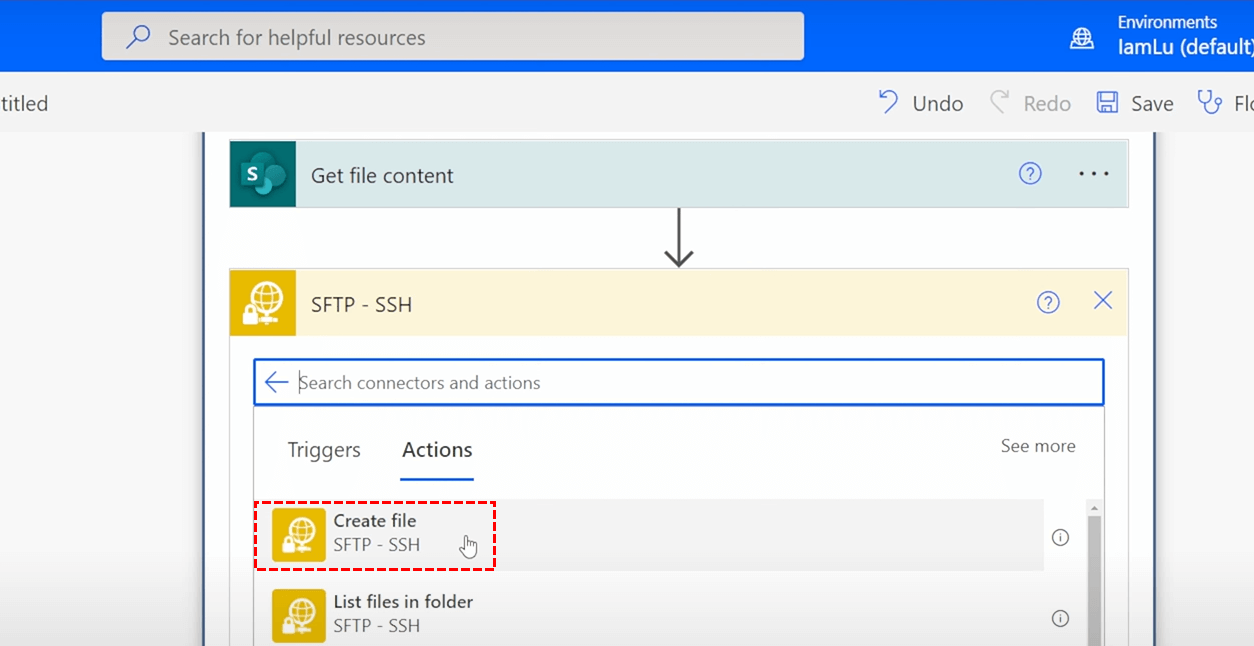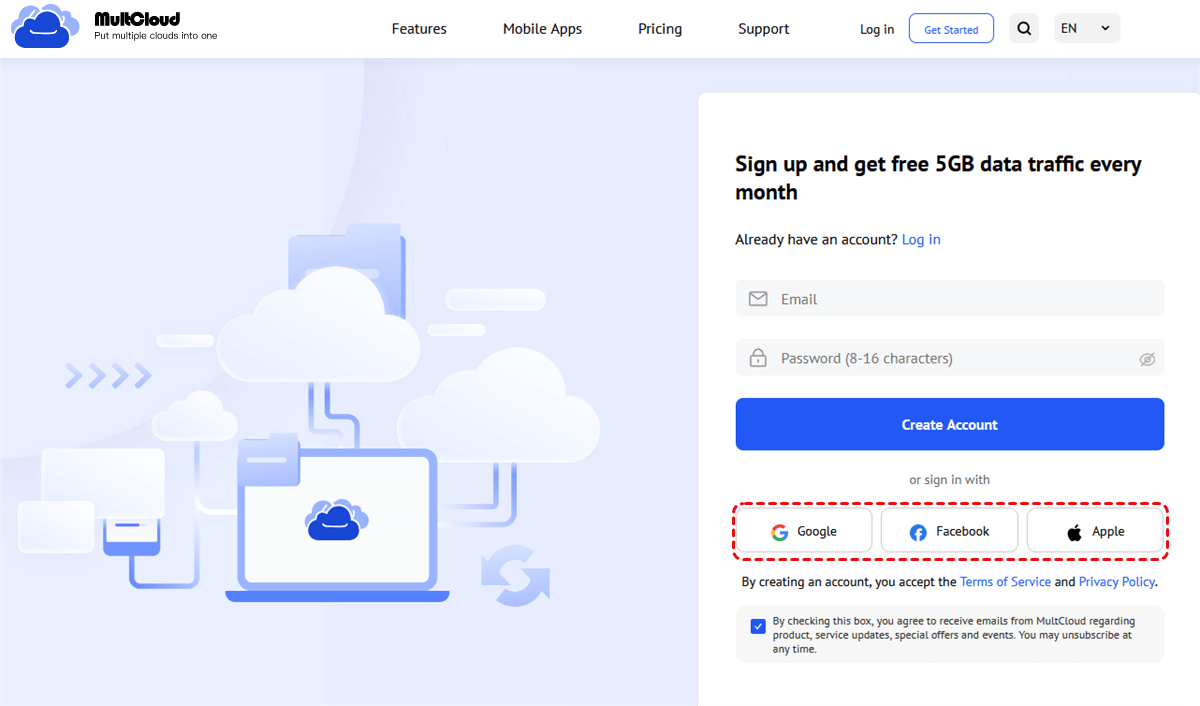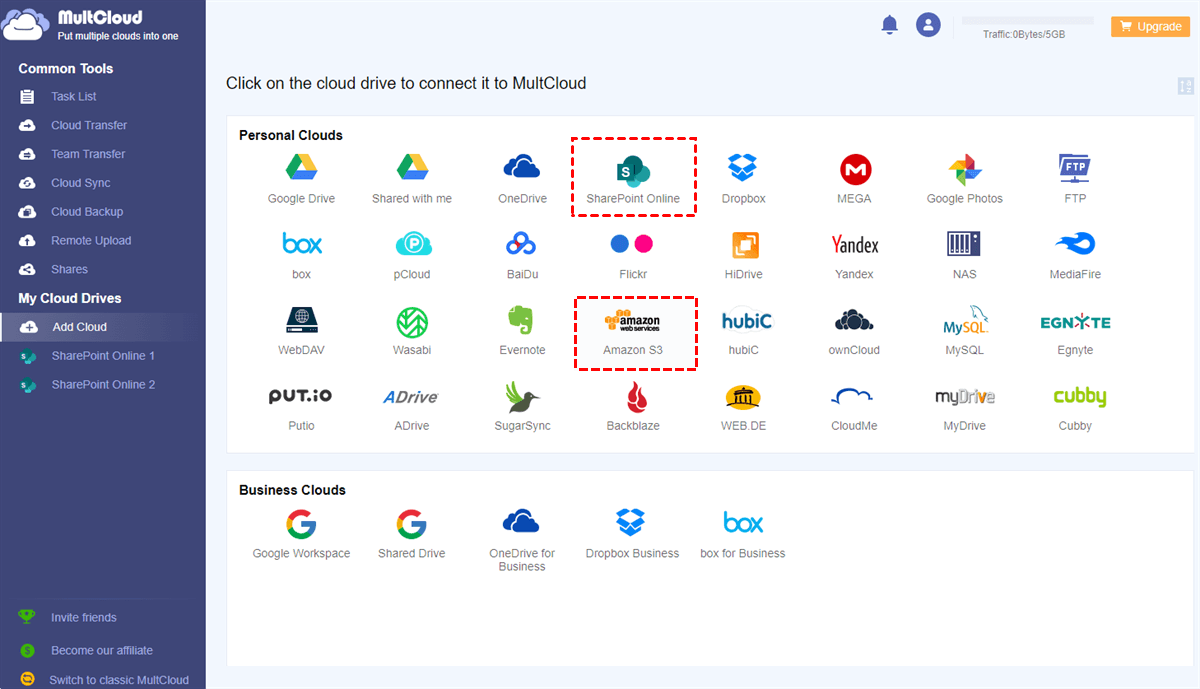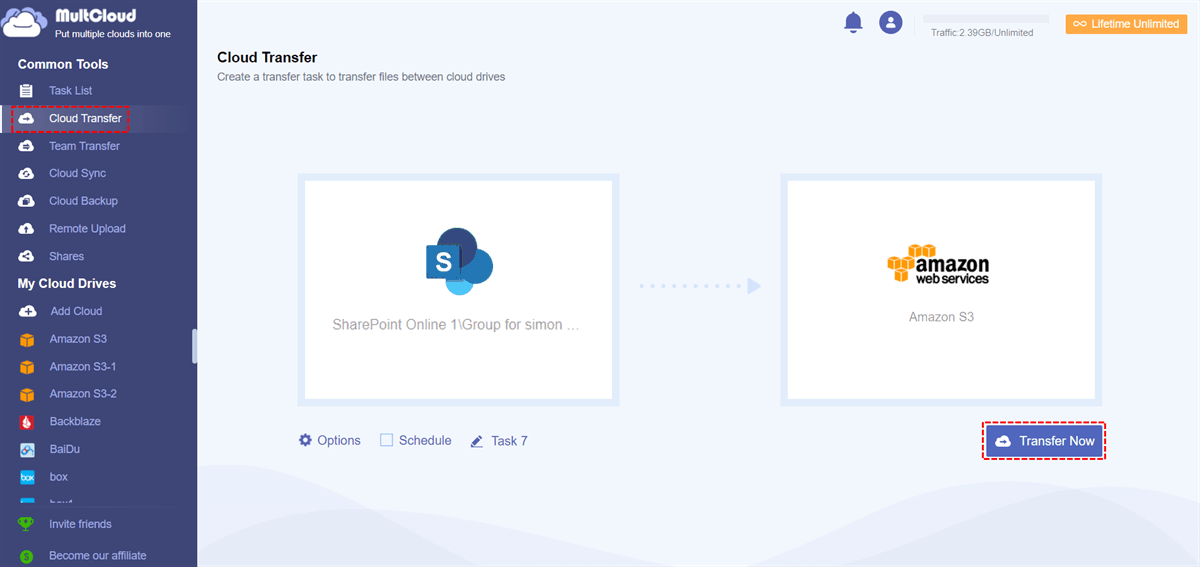Quick Search:
User Case: How to Perform Power Automate SharePoint to S3?
Has anyone tried linking SharePoint with S3 using Power Automate? My company's running on SharePoint Online, and I'm wondering if anyone has tips or faced issues doing this on a Windows 10 setup. How did you make it work? Cheers! 🚀
- Question from the community
Why Need to Transfer Files from SharePoint to S3?
The integration of SharePoint, Microsoft's collaborative platform, with Amazon S3, a scalable storage service, holds immense potential for businesses aiming to streamline data management and collaboration. Users who need SharePoint to AWS S3 migration generally consider the following benefits.
- Save Money: Moving files from SharePoint to Amazon S3 is cheaper because S3 offers cost-effective storage options.
- Handle More Data Faster: Amazon S3 is better for large amounts of data, providing quick access and better performance compared to SharePoint.
- Connect with Other AWS Services: Storing files in S3 lets you easily work with other AWS services like analytics and machine learning, enhancing overall capabilities.
- Global Access: S3's global infrastructure ensures that files can be accessed quickly and reliably from anywhere in the world, beneficial for businesses with a global reach.
🎈Let’s take a closer look at SharePoint and S3.
Step-by-Step Guide for Power Automate SharePoint to S3
Power Automate, formerly known as Microsoft Flow, is a cloud-based service that allows users to automate workflows across various applications and services. Its user-friendly interface and extensive integration capabilities make it a powerful tool for enhancing business processes. Users can experience many benefits using Power Automate for SharePoint to S3 integration.
- Time Efficiency: Automating data transfer saves time and ensures timely processing.
- Error Reduction: Minimizes the risk of manual errors in data management tasks.
- Increased Productivity: Allows teams to focus on strategic tasks rather than repetitive activities.
- Cost Savings: Optimizes resource utilization and reduces operational costs.
How to start Power Automate SharePoint to S3? The following are detailed steps.
Step 1: Create a Power Automate Flow
Open Power Automate and click on "Create" to start a new flow. Choose a trigger for your flow. For SharePoint to S3 transfer, you might use the "Schedule" trigger. Connect your SharePoint account and select the site and library you want to monitor.
Step 2: Add an Action for SharePoint
Add an action for SharePoint. Select the desired action based on your needs, such as "Get files". Configure the action with the necessary details like Site Address and File Identifier.
Step 3: Add an Action for Amazon S3
Add an action for Amazon S3. Choose the appropriate action, like "Create file. Connect your Amazon S3 account and configure the action with the necessary details such as Bucket, Key (file name), and File Content.
Step 4: Save and Test
Save your flow and give it a meaningful name. Test the flow by creating or modifying a file in the specified SharePoint library. Verify that the file is successfully transferred to the configured Amazon S3 bucket.
Step 5: Set up Error Handling (Optional)
To handle errors, consider adding actions like sending an email notification or logging the error details in a separate system.
Step 6: Monitor and Maintain
Regularly monitor the flow's execution history for any errors or issues. Make adjustments as needed based on changes to your SharePoint or S3 configurations.
[Easy & Fast] Best Alternative to Power Automate SharePoint to S3
"We are trying to automate the file transfer from SharePoint to S3. Everything is working fine and the file is created on the s3 bucket in the specified folder. The issue we are facing is that the flow ran for 9 minutes to upload a 33 MB file. Is there an alternative way to achieve this? We need to upload 20-30 files and with this performance, it will take a lot of time."
- Question from https://powerusers.microsoft.com/
Recognizing the limitations of Power Automate, businesses seek alternatives that can provide a more efficient and versatile solution for integrating SharePoint with S3. MultCloud emerges as a powerful alternative, addressing the shortcomings of Power Automate and offering enhanced features for seamless integration.
✅Customization: MultCloud lets users tailor data transfers for different needs, making it suitable for various workflows.
✅Time Savings: Efficient integration and file transfer speed up SharePoint to S3 data transfers, helping businesses with time-sensitive tasks.
✅Affordable: MultCloud offers budget-friendly pricing with different plans, ensuring users only pay for the features they need.
✅Secure Transfer: MultCloud ensures reliable and secure data transfers, reducing the risk of data loss or corruption.
The following is the step-by-step guide to setting up MultCloud for SharePoint to S3.
Step 1: Create an Account
To get started with MultCloud, you need to create an account on the platform. This straightforward process involves providing basic information and setting up login credentials.
Step 2: Add SharePoint and S3 Accounts
Once the account is created, you can seamlessly add their SharePoint and S3 accounts to MultCloud. The platform supports a range of cloud service providers, making it easy to connect and manage multiple cloud storage accounts.
Note: After adding your Dropbox account, you can also easily migrate Dropbox to SharePoint or vice versa.
Step 3: Configuring the Transfer Task
Setting up a transfer task in MultCloud is intuitive. You can specify the source (SharePoint) and destination (S3), customize transfer settings, and schedule tasks for optimal efficiency.
Notes:
- You can go to the "Task List" interface to view task progress, restart or delete tasks.
- The "Cloud Backup" function can also help you incrementally backup SharePoint to S3 or vice versa.
- MultCloud supports background transfers, so you can simply close the page or device.
Conclusion
Power Automate SharePoint to S3 is a game-changer for businesses. By automating tedious tasks, enhancing collaboration, and ensuring data security, organizations can achieve operational excellence. Or, the best alternative --- MultCloud is a top way to transfer files from SharePoint to S3.
MultCloud Supports Clouds
-
Google Drive
-
Google Workspace
-
OneDrive
-
OneDrive for Business
-
SharePoint
-
Dropbox
-
Dropbox Business
-
MEGA
-
Google Photos
-
iCloud Photos
-
FTP
-
box
-
box for Business
-
pCloud
-
Baidu
-
Flickr
-
HiDrive
-
Yandex
-
NAS
-
WebDAV
-
MediaFire
-
iCloud Drive
-
WEB.DE
-
Evernote
-
Amazon S3
-
Wasabi
-
ownCloud
-
MySQL
-
Egnyte
-
Putio
-
ADrive
-
SugarSync
-
Backblaze
-
CloudMe
-
MyDrive
-
Cubby
